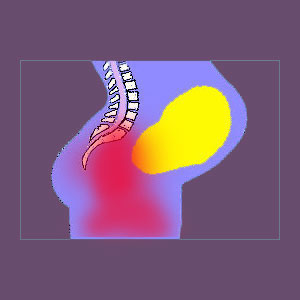
Pregnancy piriformis pain is one of the many possible uncomfortable physical consequences of carrying a baby. Pregnant women must typically suffer through various health trials of mind and body while expecting. Between the end of the second trimester and the actual birth is the time when the majority of women are susceptible to a diversity of back, joint and soft tissue pain problems that are related to the growth of the baby inside them.
Piriformis pain can be caused by pregnancy by several different explanations. Most piriformis symptoms will disappear quickly after the birth, but some might endure through structural, functional or psychosomatic models of pain.
This essay examines why pregnancy might cause piriformis pain. We will examine piriformis compression of the sciatic nerve, as well as direct symptomology in the piriformis muscle itself. We will also detail the various mechanisms through which pregnancy can motivate piriformis symptomology.
Pregnancy Piriformis Pain Syndrome
Piriformis syndrome can occur due to pregnancy, wherein the muscle will clamp down on the sciatic nerve, causing pseudo-sciatica expressions in the lower body anatomy. Typical expressions include radiating pain, tingling, weakness and numbness down the back or outer sides of one or both legs, but other locations can also be affected. Piriformis syndrome can be caused by pregnancy through several mechanisms of action including the following commonly seen scenarios:
The mass of the baby can cause many possible neurological expressions inside the abdomen and pelvic region of the mother, including causing the piriformis muscle to spasm and compress the sciatic nerve.
The asymmetrical forward protrusion of extra weight, without foundational anatomical support, can cause functional issues in the hips, legs and lumbar spine. These issues can often influence the piriformis muscle and cause it to clamp down on the sciatic nerve, inciting symptoms.
Piriformis Pain in the Muscle During When Pregnant
Localized piriformis pain can be the result of the exact same 2 scenarios described in the section above. The baby mass itself can irritate tissues within the abdomen and pelvis, possibly creating pain. Likewise, the functional changes in posture, gait and ambulation can cause the piriformis to react negative and suffer strain, fatigue or imbalance.
Some women who are told to remain sedentary by their doctors might suffer similar consequences of hip, sacroiliac and piriformis pain due to stiffness, accumulated tension and inactivity. This is particularly true for women who remain in bed much of the time due to potential complications with their pregnancy, as well as in women who were previously very physically active prior to getting pregnant.
Pregnancy Piriformis Pain Alternate Explanation
Bringing new life into the world can be a very stressful time, both consciously and subconsciously. We have seen a dramatic rise in the percentage of women who are affected by mindbody pain syndromes while pregnant over the past 30 years. Psychologists have many explanations as to why pregnancy can cause psychoemotional sensitivities, which are beyond the scope of this article, but we can confirm that psychosomatic piriformis pain is a very common manifestation in expecting mothers.
It is important to identity and treat mindbody pain or else it tends to persist after the birth and defy the usual therapy modalities of care. Typically a program of knowledge therapy can be very effective at not only ending the pain, but also helping the mother to get in touch with her emotional repressions and suppressions, assisting her in the considerable and imminent task of becoming a great parent to her precious new child.
Piriformis Pain > Causes of Piriformis Pain > Pregnancy Piriformis Pain





